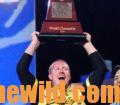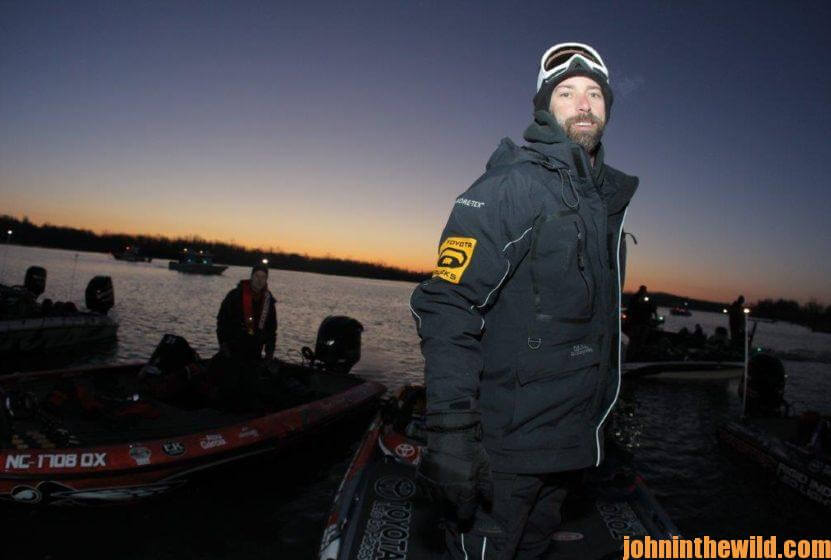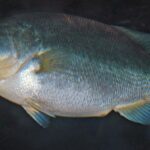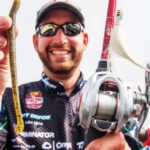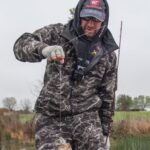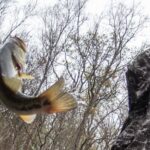Editor’s Note: Michael Iaconelli of Pittsgrove Township, New Jersey, won the 2003 Bassmaster Classic in New Orleans, Lousiana, which is just about as far away as you can get from his home in New Jersey, and the Angler-of-the-Year title. Today he’ll tell us how he fishes the icy waters of the northern U.S. in January and February.
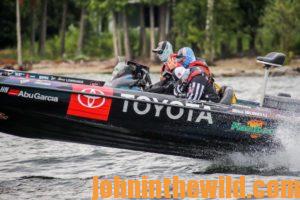 In January and February, we have to deal with icy, hard water in the North, so you have to work around the ice. When you can find open water, January and February will produce some of the best fishing of the year, because the bass really group-up during these months. At this time of year, you’ll have 99% of the bass in 10% of any northern lake. Since the bass are so stacked-up, even though their metabolism is lower, your catch ratio will be good. When you identify the places the bass are holding, some of those fish will bite.
In January and February, we have to deal with icy, hard water in the North, so you have to work around the ice. When you can find open water, January and February will produce some of the best fishing of the year, because the bass really group-up during these months. At this time of year, you’ll have 99% of the bass in 10% of any northern lake. Since the bass are so stacked-up, even though their metabolism is lower, your catch ratio will be good. When you identify the places the bass are holding, some of those fish will bite.
Another big advantage to fishing in January and February is that most sportsmen up here put up their fishing rods in October and don’t take them out again until March. So, you’ll pretty much have the water to yourself. You can fish really-popular lakes all day here and never see another fisherman. Our bass are still in a winter pattern. They don’t move into their pre-spawn pattern until March or April.
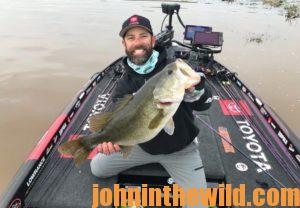 There are plenty of good lakes up here like Lake Hopatcong and tidal rivers like the Delaware River that borders New Jersey, New York and Pennsylvania, which is my favorite place to fish. Whether you’re fishing a river, a lake or a farm pond with open water in the North in January or February, there’s one key ingredient that fits all waters – you’ll find bass holding in the deepest water with the steepest vertical bottom breaks.
There are plenty of good lakes up here like Lake Hopatcong and tidal rivers like the Delaware River that borders New Jersey, New York and Pennsylvania, which is my favorite place to fish. Whether you’re fishing a river, a lake or a farm pond with open water in the North in January or February, there’s one key ingredient that fits all waters – you’ll find bass holding in the deepest water with the steepest vertical bottom breaks.
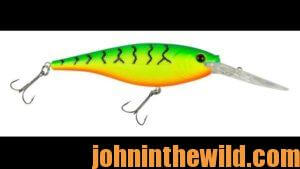 In a farm pond at this time of year, the deepest, most-vertical break may only be 8-feet down by the dam, so that’s where the bass will be concentrated. In the Delaware River, the deepest, most-vertical break at this time of year will be the old shipping harbors and coves, which are deep, vertical breaks out of the current. On a lake like Lake Hopatcong, the deepest, most-vertical break areas will be the main lake points and the channel bends. The bass are holding in this section because the deepest water in the coldest part of the year will usually be the warmest water. Too, the baitfish will be there, and the bass can change depths quickly and easily, according to temperature by simply going up or coming down those vertical breaks. Many of these breaks will be on a 45-degree angle or more. Therefore, by only moving 5 to 10 feet in the water column, the bass can move 5 to 10 feet in the water by only swimming 5 to 10 yards.
In a farm pond at this time of year, the deepest, most-vertical break may only be 8-feet down by the dam, so that’s where the bass will be concentrated. In the Delaware River, the deepest, most-vertical break at this time of year will be the old shipping harbors and coves, which are deep, vertical breaks out of the current. On a lake like Lake Hopatcong, the deepest, most-vertical break areas will be the main lake points and the channel bends. The bass are holding in this section because the deepest water in the coldest part of the year will usually be the warmest water. Too, the baitfish will be there, and the bass can change depths quickly and easily, according to temperature by simply going up or coming down those vertical breaks. Many of these breaks will be on a 45-degree angle or more. Therefore, by only moving 5 to 10 feet in the water column, the bass can move 5 to 10 feet in the water by only swimming 5 to 10 yards.
I try to catch bass two ways – by getting a reaction strike, or by finesse fishing slow and low to catch feeding fish. To get a reaction strike from bass that react to a bait but aren’t really feeding, I’ll fish suspending jerkbaits or crankbaits with a tight wobble, like a Berkley Frenzy Floating Flicker Shad (https://www.berkley-fishing.com/products/flicker-shad-1285348), a Rapala Shad Rap (https://www.rapala.com/rapala/lures/shad-rap-series/) or a Bill Lewis Rat-L-Trap (https://rat-l-trap.com/).
 You can work these crankbaits, so that they imitate a dying shad. I crank the jerkbait down to where I think the bass are holding and let it sit there motionless for long periods. With a tight-wobbling crankbait, I’ll allow it to sink to the bottom and jig it up and down like I’ll fish a jigging spoon with my secondary technique – slow and low. I like a jig-and-pork or the shaky-head worm, which is my all-time favorite winter bait. I like fishing a 4- or a 5-inch worm on a Tru-Tungsten weight really slowly on the bottom, shaking the worm, moving it slowly and then shaking it again with the line. On my crankbaits and jerkbaits, I like pearls and silvers and minnow-type baits. On the bottom-bouncing baits, like the worm, I like blacks, browns and crawfish colors. In clear water, I like natural, more-translucent colors. But on a more overcast day, I prefer brighter colors.
You can work these crankbaits, so that they imitate a dying shad. I crank the jerkbait down to where I think the bass are holding and let it sit there motionless for long periods. With a tight-wobbling crankbait, I’ll allow it to sink to the bottom and jig it up and down like I’ll fish a jigging spoon with my secondary technique – slow and low. I like a jig-and-pork or the shaky-head worm, which is my all-time favorite winter bait. I like fishing a 4- or a 5-inch worm on a Tru-Tungsten weight really slowly on the bottom, shaking the worm, moving it slowly and then shaking it again with the line. On my crankbaits and jerkbaits, I like pearls and silvers and minnow-type baits. On the bottom-bouncing baits, like the worm, I like blacks, browns and crawfish colors. In clear water, I like natural, more-translucent colors. But on a more overcast day, I prefer brighter colors.
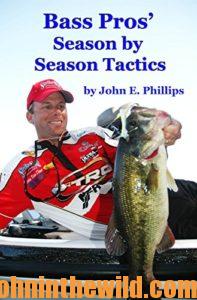 To learn more about catching bass, check out John E. Phillips’ book, “Bass Pros: Season by Season Tactics,” at https://amzn.to/2IKUhe, available in Kindle and print versions, and Click here for the Audible link. You may have to copy and paste this click into your browser. (When you click on this book, notice on the left where Amazon says you can read 10% of the book for free and hear 10% of the book for free).
To learn more about catching bass, check out John E. Phillips’ book, “Bass Pros: Season by Season Tactics,” at https://amzn.to/2IKUhe, available in Kindle and print versions, and Click here for the Audible link. You may have to copy and paste this click into your browser. (When you click on this book, notice on the left where Amazon says you can read 10% of the book for free and hear 10% of the book for free).
Tomorrow: Skeet Reese’s West Coast Bass Tactics for January


